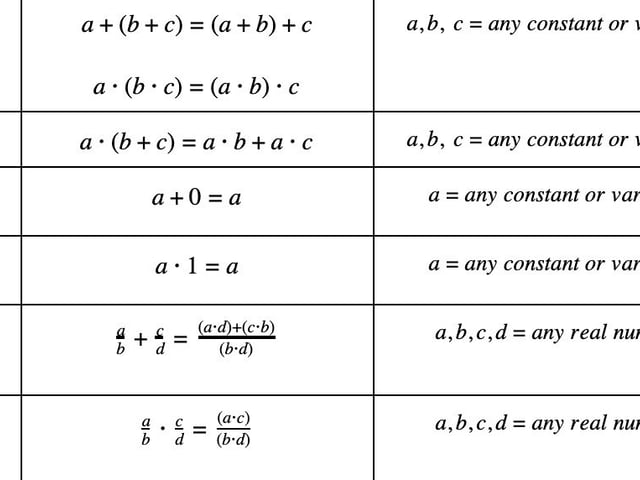
What Is the PERT Test?
Are you ready to start earning college credits? American employers are looking for academically qualified applicants to add to their workforce.
At least 65% of job openings require a higher education degree, according to Forbes. And over 60% of hiring managers will still skip over a qualified resume if it doesn’t list a college degree.
If you’re considering a college campus in Florida, you may have to take the PERT test as a prerequisite. If you’re a current student in a public high school, your PERT testing is coming up.
What is the PERT test, and how does it affect your entrance into college? Our guide has all the information you need and more to master PERT testing.
What is the PERT Test?
The PERT test is Florida’s college readiness test. It helps students determine where they’re at in college coursework levels, so students can save money and time earning their college degree(s).
Most of Florida’s public high school students complete PERT testing. The first test is typically given in 11th grade.
Aspiring college students can also take the PERT test through the Florida College System. If you’ve taken the SAT or ACT, however, generally those scores can count towards placement instead.
PERT Testing Basics
Similar to aptitude tests, PERT placement testing measures your skills and abilities. The test material is based on predictors for college coursework success.
Testing Model
PERT testing uses the computer adaptive test (CAT) model. This model seeks to maximize skill and ability measurements by creating a dynamic test that continuously adjusts to your level.
The assessment data is then more precise than one-size-fits-all achievement testing. The military ASVAB also uses a CAT version for predicting career success.
CAT works by adjusting the difficulty level of your questions based on your previous answers. A correct answer raises the difficulty of your next question. An incorrect answer makes your next question easier.
Test Sections
The PERT test includes three sections:
-
Mathematics
-
Reading
-
Writing
Each section will have 30 questions. Only 25 are scored, but you will not know which 25.
Mathematics
The mathematics section is a mix of pre-algebra and algebra, with some geometry added in. This can include:
-
Working with fractions and decimals
-
Solving equations and inequalities
-
Evaluating algebraic expressions
-
Dividing by monomials and binomials
-
Working in the coordinate plane
-
Solving word problems
Students aren’t permitted to bring a calculator or use school calculators, according to the Florida Department of Education. The PERT test is online, however, and will include an on-screen calculator.
Reading
The reading section tests your reading comprehension and analysis skills. There are two main study paths for this section: terms to know and skills to practice.
Relevant terms include:
-
Main idea and implied main idea
-
Supporting details
-
Author purpose and tone
-
Inference
-
Bias
-
Fact and opinion
-
Reasoning and rhetoric
Relevant skills include:
-
Identifying important information
-
Finding evidence
-
Using context clues
-
Analyzing word choices
-
Finding a given work’s organization (ex: cause and effect)
-
Analyzing the event relationships
-
Determining sentence relationships
-
Extracting character traits and motivations
-
Comparing two or more passages on similar topics
In many cases, the answer won’t be directly stated. You will have to use analysis and inference to determine the answer using relevant terms and skills.
Writing
The writing section also tests your analysis skills. You won’t write an essay of your own, but you will have to critique and correct someone else’s writing.
This means you’ll have to be familiar with grammar terms (adverb, modifier, citation, etc.) and grammar mechanics. Grammar mechanics include:
-
Parallel structure in a list
-
Sentence fragment
-
Comma splice
-
Subject-verb agreement
-
Verb forms and tenses
-
Pronoun/antecedent agreement
-
Confusing words and phrases
-
Adjective and adverb forms
-
Proper capitalization and punctuation
-
Correct word spelling
-
Correct word choice
-
Agreement of verb tense
-
Word order in sentences
-
Identifying supporting details
Although the list seems long and somewhat intimidating, much of it is simple grammar rules you’ve learned throughout grade school. You may also get questions with no errors in them at all.
Scoring
The PERT test scores on a scale from 50-150. Current standard scores are:
-
Reading: 106
-
Writing: 103
-
Mathematics:114
PERT is a placement test, so technically there is no “failing” score similar to achievement tests. There is no academic or punitive punishment for scoring below the standard.
The test is only used to help students succeed in college. It doesn’t do you any good, for example, to attempt a college-level algebra class if you’re struggling with fractions and decimals.
PERT scores help high school students determine if they need preparatory classes. It can also help college students determine if they need remedial classes before attempting core coursework.
How Long is the PERT Test?
The PERT test isn’t timed. In some cases, a testing site may even let you start and stop the test if necessary.
The test generally takes around 2-3 hours. According to the Florida Department of Education, the average time for math and writing is 30 minutes, while the reading test is an hour.
How Do I Take the PERT Test?
Both public schools and colleges give the PERT test online. There is no paper and pencil option. There are several places to take the test:
-
Public high schools
-
Walk-in testing centers
-
College campuses
-
Remote location options
Public school testing times and locations depend on the school administration. The test is free for high school students.
PERT testing at a campus may require an appointment. They also require a valid form of ID.
The testing fees will vary between colleges. Some may administer it for free, charge more or less for retakes, or simply have a flat fee for each test.
Mastering the PERT Test
There’s no penalty for PERT scores that are below the standard. But mastering the skills and knowledge needed for a standard score helps you build yourself up for college readiness.
If you’re taking the PERT as part of college registration, mastering the PERT can mean less coursework. You won’t have to take remedial classes before your intro courses. This translates to less time and money spent on earning your degree.
Like any test, mastering your PERT testing includes using effective study habits and study tools. Cramming, cheating, and other bad test-taking habits won’t be a great start to your college career.
Best Study Habits
Study habits can be tricky if you have yet to develop them. Consistent study over an adequate period of time is the best strategy.
Some people study too soon and/or stop studying too early, so they lose information from disuse. Psychologists theorize much of our short-term memory is lost if it’s not constantly refreshed.
Some people study too late, and can’t absorb all the knowledge they need in time. Last-minute cramming is one of the least effective study methods.
More effective study strategies include:
-
Set a consistent study schedule
-
Set achievable study goals
-
Minimize distractions during study
-
Know your strengths and weakness
-
Periodically revisit areas you’ve already studied
Your study habits should be fixed, while your study material should be dynamic. That way you won’t overstudy information you already know, while understudying what you need more time mastering.
Best Study Tools
For many people, it’s not enough to read the same book or listen to the same video over and over. Learning comes from many different methods, such as active recall.
Study tools will also help you hone different skills. An effective study strategy uses multiple study tools.
Flashcards
Flashcards are used to recall information from memory, instead of recognizing it through multiple choices. PERT flashcards can help you memorize math formulas, reading terms, and grammar rules.
Study Guides
Study guides can help you go over the general material found on a test. Without a study guide, you may waste time studying material that isn’t even tested. PERT study guides can also help you organize your study material into a workable study schedule.
Lessons
Dynamic lessons are used to sort what you know from what you’re learning. Like the CAT testing method, your results are based on performance.
New lessons are generated based on correct and incorrect answers. To master a lesson, you must complete all questions correctly.
PERT lessons can help you keep your study material dynamic, so you can adjust your study planning for areas that need more attention.
Practice Tests
Practice tests help you prepare for the real test, and they also help you determine which test-taking strategies work best for you. For example, you may prefer to skip hard questions and complete the easy questions first (although this isn’t an option with the CAT method).
Practice testing also helps alleviate test anxiety. PERT practice tests will prepare you for the exam structure, the types of questions you’ll see, and how to answer the questions quickly and effectively.
Other Test Taking Tips
There are many other tips and tricks to help you master a test. They can even include eating certain foods or sleep and exercise recommendations.
Union Test Prep offers a wealth of study resources, including test-taking and study tips you might never have guessed could be effective.
Invest in Yourself and Your Future- Start Mastering the PERT Test Today
The PERT test is a placement exam for Florida high school and college students. By mastering the PERT, you prove to yourself and the state of Florida that you can master college.
Are you ready to start studying? We offer free PERT testing resources and other test-taking guides. Sign up today!
Keep Reading

Postsecondary Education Readiness Test Blog
Is the PERT Test Hard?
Close to 50 million students are enrolled in kindergarten through 12th-…

Postsecondary Education Readiness Test Blog
Formula List for the PERT Mathematics Test
Taking the PERT Mathematics Test? One key to success is knowing your fo…

Postsecondary Education Readiness Test Blog
What Writing Skills Are Required on the PERT Test?
The PERT test is the state of Florida’s general placement test, which i…